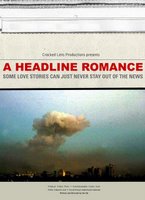In Lieu of Any Real Posting
 A blog entry summarizing a recent Pixar lecture by director Andrew Stanton (Finding Nemo) on scriptwriting. I wish I knew these before I embarked on this journey of self-flagellation called writing, but I've come out on the other end with a clear understanding of the need to stick to these basics.
A blog entry summarizing a recent Pixar lecture by director Andrew Stanton (Finding Nemo) on scriptwriting. I wish I knew these before I embarked on this journey of self-flagellation called writing, but I've come out on the other end with a clear understanding of the need to stick to these basics.In 1992, when he first got the chance to do a story from whole cloth, he was somewhat overwhelmed and intimidated by the task. Then he saw a particular scene in Ryan's Daughter, after which "the clouds parted" regarding movie storytelling. He then understood it's about audience participation -- that a good storyteller makes the viewer connect the dots and form a conclusion. This was a recurring theme, that the audience has an unconscious desire to work for their entertainment.
First he stared with an vulgar and hilarious joke, which I won't repeat here, but which served to make his point that Storytelling is joke-telling. Or, as David Mamet wrote, storytelling is no different from gossip -- we want to know what happens. The joke or story, and the way it's told, are important . . . but we want to know what happens. And the payoff should be unexpected and satisfying. And, more importantly for the writer, one should know that punchline as one is writing.
He then emphasized a point that I think most screenwriters ignore, that Screenwriting is not writing. A screenplay is an intermediary form, a kind of cinematic dictation. I think this is abundantly clear to those of us in animation, where so much of a film is built, piece by piece, by talented people in a number of disciplines.
He described the list of rules they started Toy Story with (you've probably seen this elsewhere -- no songs; no "I want" moment; no love story; no happy village; no villian), and how at an early story screening at Disney, a top lyricist who was then working with Disney gave a list of notes calling for every single element on that list. The message was to dare to be different, and to do things your own way, without relying on formulas.
A key to a great story is to like your main character. Initially Woody was a selfish, abrasive a-hole. He assumed that, since he was going to have a story-arc in which he would change, that this wasn't a problem. But the film didn't work (he proved the point with an early story reel, complete with Tom Hanks' dialogue, that was painful to watch) until he understood that "like" means "empathize" -- that even if Woody was a jerk and selfish, that the audience had to empathize with him.
This led to the idea of Unity of Opposites -- characters need clear goals that directly oppose each other. Woody's selfish goal, to get back in Andy's good graces, directly opposed Buzz's goal.
Writing is rewriting -- the story will emerge as one rewrites, and the first draft is always nothing more than a starting point. Therefore, "be wrong as fast as you can" -- blast out that first draft, then dig into the rewriting and do the real work.
Building a scene -- you need to have something to say, something that gives the scene purpose. This is not necessarily a message, but a truth (which you can debate in the story). The example here was the scene of Woody in the crate at Sid's house. He begins by giving a phoney pep talk to Buzz, but as the scene unfolds he reveals the truth that he is deeply insecure. This unfolding truth is what powers that sequence.
Story Physics-- this was a tag that sounded very specific (and the audience really wanted some genuine story formulas here), but what he referred to was more the underlying and seemingly contradictory truths which often thwart or drive character's behaviors, like "If you really love something you'll let it go," or "If you really want to sell someone something you have to not care if they'll buy it."
Key Image -- a key image should epitomize the core of the story (this is similar to what I've read from Stanley Kubrick). This image embodies key elements of theme and story and helps keep the storytelling on track. As examples, he showed the image of Woody being knocked off the bed for Buzz, of Sully holding Boo's hand in a doorway, of the last vulnerable egg in Finding Nemo. And he noted that A Bug's Life didn't have such an image, causing him to struggle with finding the heart and a core of the story.
Eventually, during a story screening of A Bug's Life he realized that the initial main character, "Red" (a red ant who owned the circus and was something of a con man), was unsympathetic, and his actions late in the film unbelievable. It became clear to him that Flik, a relatively minor character, needed to be the lead. And the rest was history.
posted by Kevin Koch on TAG Blog



















